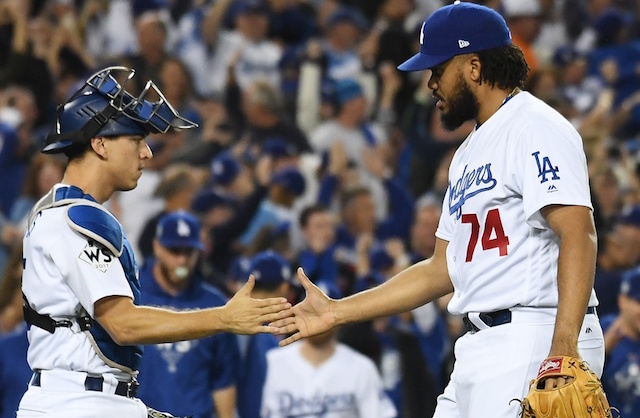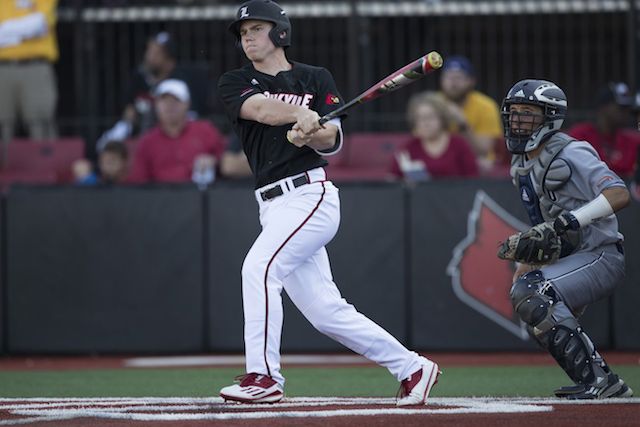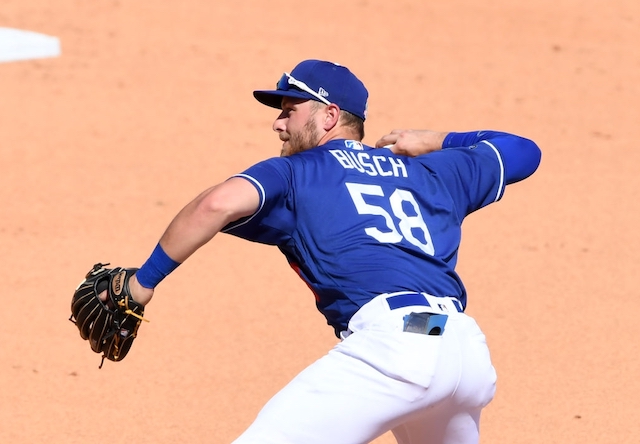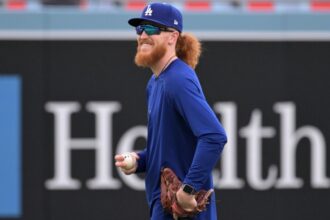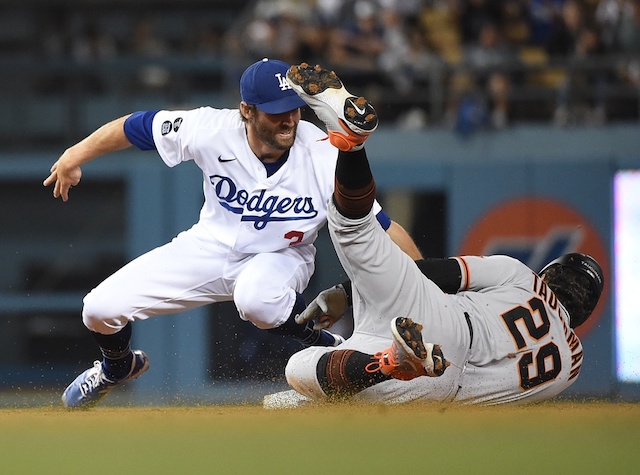When this series of articles began, the headline focused on the depth that lined the Los Angeles Dodgers 40-man roster, top to bottom. The overarching message being, the Dodgers are a strong team in large part because of the quantity of great players in their system.
Now, having reached near to the top of the list, this caveat can be added: the team’s high-end quality is pretty darn impressive, too.
While it can confidently be said no team in baseball has a roster as strong as the Dodgers’ 1-40, few can match them Nos. 1-10 as well.
So, without further ado, let’s look at the back-half of the Dodgers’ top-10. No. 6 is omitted from this list because there was a tie at No. 5.
10. Austin Barnes, C
In 2017, only seven catchers in all of baseball posted a higher WAR than Barnes (2.5) — which may cause you to wonder how the eighth-best catcher climbs this high on the list. The reason?
Barnes did it in just 262 plate appearances — less than half the amount of Gary Sanchez (who led the league), and a full 100 plate appearances less than all but one player ahead of him (Kurt Suzuki posted a 2.7 WAR in 302 PA).
While seemingly always on the fringe of the 25-man roster thanks to the presence of Yasmani Grandal (No. 11 on the DodgerBlue.com list), Barnes experienced a breakout season last year.
He batted .289/.408/.486 with eight home runs, and as a result, when the playoffs rolled around, Barnes was named the starting catcher in 13 of the team’s 15 postseason games.
Another piece of Barnes’ value is his versatility. While you don’t want to see your catcher playing every day, Barnes has the ability to fill in at second base (21 games last season).
This is especially important if the Dodgers don’t trade Grandal given Logan Forsythe’s struggles last year.
9. Rich Hill, SP
Almost 38 and still spinnin’ it. While 2017 was worse than 2015 and 2016, it was still pretty darn good all things considered.
In 25 starts, Hill posted a 3.32 ERA and increased his strikeouts per nine innings. The problem was hit vulnerability to the long ball. In 2016, Hill allowed an absurd 0.33 homers per nine.
That was down from an equally-impressive 0.62 the year before. But last season that number jumped all the way to 1.19. It was still okay (Clayton Kershaw’s mark was 1.18, the highest of his career), just far worse than Hill was used to.
The other problem Hill will have to solve this season is control. His walks per nine innings have increased every year since returning from the Independent League. While his four postseason starts were generally considered successful (2.55 ERA), Hill’s 4.01 FIP in those outings and bloated BB/9 (4.08) show he might have been more lucky than good.
Heading into 2018, Hill has likely moved back from the No. 2 spot in the rotation to No. 3 behind Alex Wood, but you could argue that Hill and Wood have as much if not more pressure to succeed than anyone else on this list.
8. Alex Wood, SP
In his first 35 career starts with Atlanta, Wood posted an ERA under 3.00, won 14 games and posted a WAR of 4.2. Unfortunately, beginning in 2015 (the season he was traded to L.A.), things began to decline — with a 3.84 ERA in 2015 and a 3.73 ERA in 2016.
Now, of course, those are still really good statistics. Especially considering Wood’s FIP in both years was lower than his ERA.
In 2017, everything clicked. Wood made 25 starts and posted a 2.72 ERA while putting together a ridiculous 16-3 record that featured an 11-0 start to the season.
Now, all of that does come with an asterisk. Wood’s K/9 actually decreased by almost a full strikeout, his FIP was higher than it was in both 2013 and 2014, and his BABIP (batting average on balls in play) suggests there was a bit of luck involved.
All that said, Wood just turned 27 years old and while Hill might be on the downside of his career, Wood should be entering his prime. If he can stay healthy, it can be reasoned to expect something similar as last season.
7. Kenley Jansen, RP
Of the top-10 player on the roster, Jansen was definitely the hardest to rank. How do you compare someone who throws less than 70 innings to another who throws twice that or plays every day?
Yes, Jansen is the best in the world at what he does. And probably has been for a couple of years. But ultimately it’s difficult to quantify his overall impact.
That debate aside, however, he’s ranked No. 7 simply because it’s impossible to deny how freaking good he is. In 2017, Jansen faced 258 batters and struck out 109 of them (walked only seven), posting a WAR of 3.6.
Now, that 3.6 might mean little to you, but consider that placed him No. 17 among all pitchers. Every single pitcher ahead of him on the list threw at least 100 more innings.
In fact, 11 guys just below Jansen all had roughly 70 innings more innings, and he still proved to be more valuable. That’s insanity.
At 30 years old, there’s no sign Jansen is slowing down anytime soon. If anything, he’s getting better. The scouting report is out and it doesn’t matter — no one can hit that cutter.



